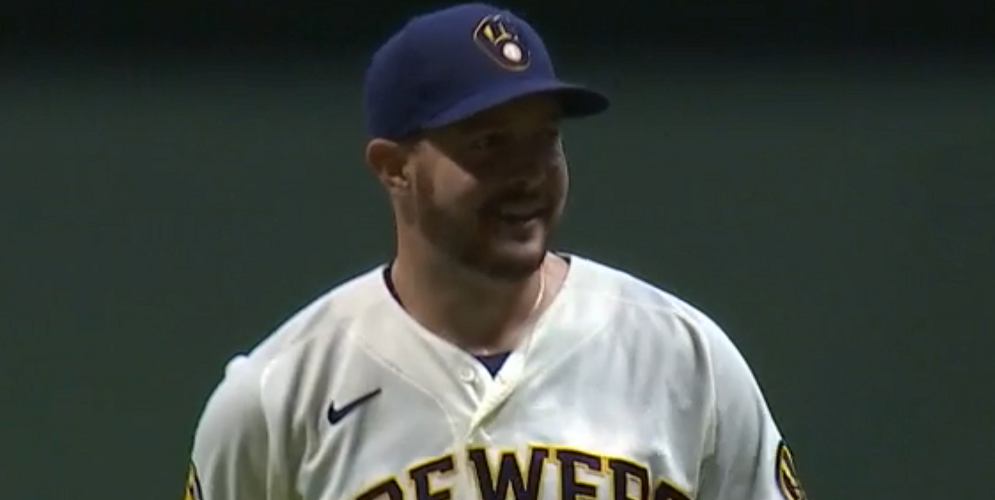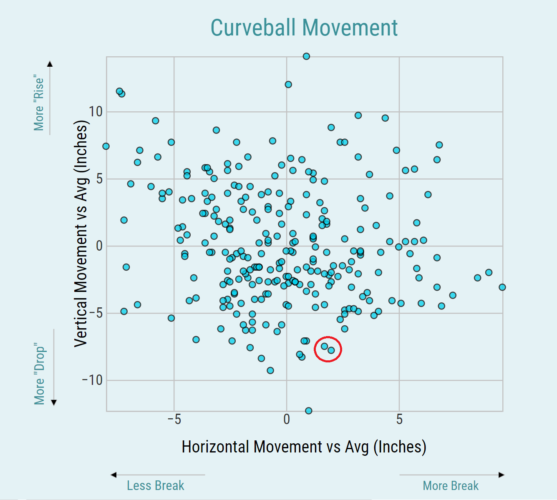
I did a quick write-up of the Corey Knebel trade on Wednesday night. In short, it’s the exact kind of move you’d expect Andrew Friedman to make when it comes to his bullpen construction.
But what did he and his staff see in Knebel that prompted them to make the deal for the hard-throwing reliever? Sure, the velocity is enticing — when Knebel is healthy — but the more intriguing part of his repertoire is his curveball.
The Dodgers’ bullpen has been overwhelming fastball-dominant in the last four seasons. It has thrown a fastball 61.6% of the time since 2017. The average velocity of the fastballs has been 94.1 MPH in that time — tied for 3rd-fastest in the game over the time. This includes sinkers and 2-seam fastballs. So, Knebel’s fastball will fit right in.
In turn, the Dodgers’ bullpen has been in the middle-third of curveball usage from its relievers in that time — 7% usage. Knebel has thrown a curveball nearly 29% of the time in his career. In his return from his second Tommy John surgery this past season (an, admittedly, small sample size of 13 1/3 innings), he threw it 33.8% of the time. I would expect him to remain in the 30% usage rate as a Dodger.
In 2017, when Knebel was lights out, his curveball averaged 6.8 inches of vertical movement — 9th-best in baseball, just behind Joakim Soria and just ahead of Yu Darvish. His percentage of drop versus the average was 13% — 6th-best in the game. It’s a tight drop because he doesn’t get a ton of overall movement on the pitch, but, well, let’s look at it in action.
Filthy indeed.
Not sold on data from three years ago, well, his curveball featured even more vertical movement in 2018 — 7.5 inches, which was 8th-best in MLB. The drop vs. average was 15% (4th-best) and he even got more movement on the pitch than the previous season (58.5 inches).
His profile is somewhat similar to Joe Kelly‘s, even if Kelly’s fastball has a lot more movement. However, their curveballs are remarkably similar when it comes to movement — overall, vertical and horizontal — from 2018.

Knebel is on the left, Kelly is on the right.
Kelly’s curveball has more spin than Knebel’s (300-400 RPM), but both have similar movement characteristics.
Knebel’s curveball has been one of the most effective from a pitcher since the 2016 season. He has allowed just a .197 wOBA against, 10th-lowest among relievers. He’s allowed just four extra-base hits on the pitch in that time — all doubles. It’s one of the best and most effective curveballs in the game, let alone from a reliever.
While the 2020 season was abbreviated for him (and everyone), and his performance wasn’t great, there’s some optimism if you look at Knebel’s close to the season.
One other thing to note: Friedman has stated publicly he wanted to get a little diversity in the bullpen when it comes to arsenals.
Knebel definitely fits that description.
——
A full offseason with one of the premiere pitching development groups in the entire sport and it wouldn’t be at all surprising to see Knebel not only return to form, but possibly get even better.
“Shrewd” is the word to describe this acquisition for the Dodgers. Not many teams can afford to take a $5-plus million flyer on a pitcher like Knebel, but this is precisely the kind of thing the Dodgers can afford to do. I mean, all teams can afford to do it, the Dodgers just choose to.
 Dodgers Digest Los Angeles Dodgers Baseball Blog
Dodgers Digest Los Angeles Dodgers Baseball Blog